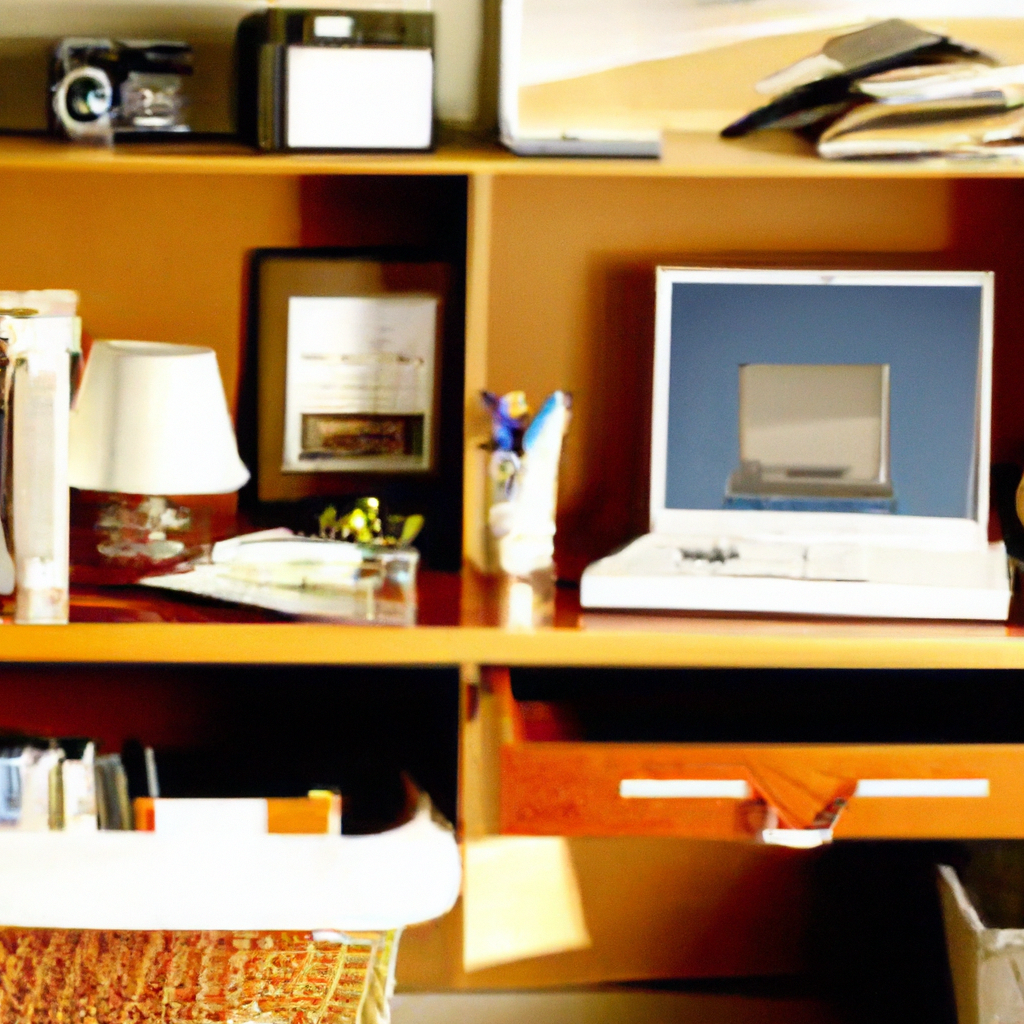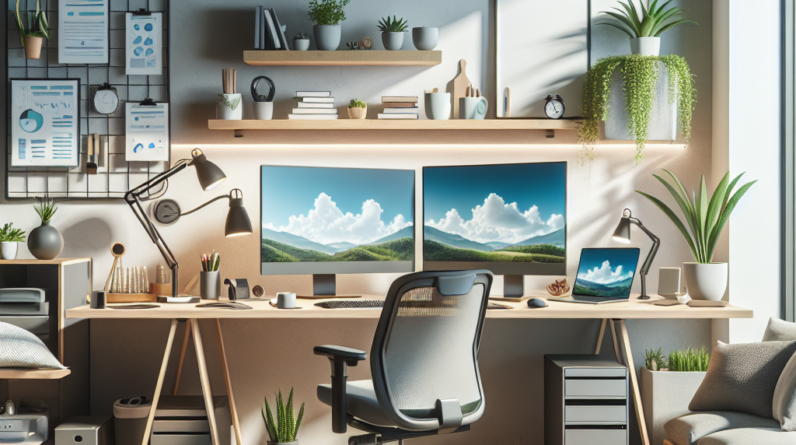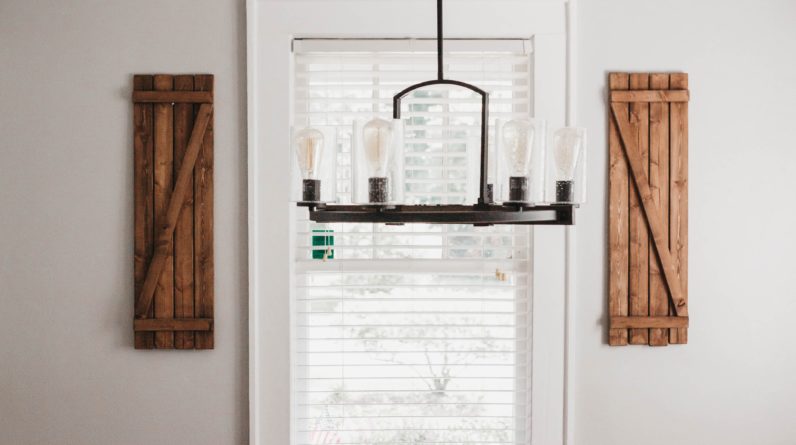
10 Essential Tips For Creating A Productive Home Office Space
Setting up a productive home office space can greatly enhance your work-from-home experience. Whether you’re a freelancer, remote worker, or entrepreneur, having a dedicated workspace can improve focus, efficiency, and overall productivity. In this article, you will discover 10 essential tips that will help you create an environment that fosters creativity, maximizes organization, and promotes a healthy work-life balance. From decluttering and ergonomic solutions to incorporating natural light and setting boundaries, these tips will empower you to transform your home office into a sanctuary of productivity.
1. Choosing the Right Space
Consider Your Needs and Work Style
When setting up a home office, it’s important to consider your individual needs and work style. Think about the tasks you’ll be performing, the equipment you’ll need, and your preferred work environment. For example, if you need a quiet space for focused work, you may want to choose a room that is separate from high-traffic areas. On the other hand, if you thrive in a more collaborative atmosphere, you may prefer a space that is closer to the heart of your home.
Identify a Dedicated Space
To maximize productivity, it’s crucial to have a dedicated space that is solely designated for work. This helps create mental boundaries between your personal life and work life, allowing you to focus and be more productive during working hours. Whether it’s a spare room, a corner of your living room, or even a converted closet, find a space that you can claim as your own and set it up in a way that suits your needs.
Evaluate Lighting and Noise Levels
Lighting and noise levels can significantly impact your productivity and overall well-being. Choosing a space with ample natural light can help combat eye strain and boost your mood. Additionally, consider the noise levels in the area you’ve chosen. If there are constant distractions or loud noises, it may be difficult to concentrate. Assess the lighting and noise levels in your chosen space and make adjustments accordingly, such as adding curtains or blinds to control natural light and using noise-canceling headphones to minimize distractions.
2. Furniture and Equipment
Invest in a Comfortable Chair
A comfortable chair is an essential investment for your home office. Since you’ll be spending hours sitting, it’s crucial to choose a chair that provides adequate support for your back, encourages good posture, and minimizes the risk of discomfort or injury. Look for chairs with adjustable features, such as height and lumbar support, and opt for ergonomic designs that promote proper alignment of the spine.
Choose an Ergonomic Desk
In addition to a comfortable chair, an ergonomic desk is key to creating a functional and productive workspace. Look for a desk that is the appropriate height for your stature, allowing your arms to rest comfortably on the surface while keeping your back straight. Consider the size and layout of your workspace when choosing a desk, ensuring it fits well and provides enough surface area for your work tasks.
Organize Storage Solutions
An organized workspace is a productive one. Invest in storage solutions that help keep your desk and surrounding area clutter-free. This could include filing cabinets, shelves, or storage bins. Make use of vertical space and utilize storage options that fit your specific needs. By keeping your office supplies and documents neatly organized, you’ll minimize distractions and be able to easily locate what you need when you need it.
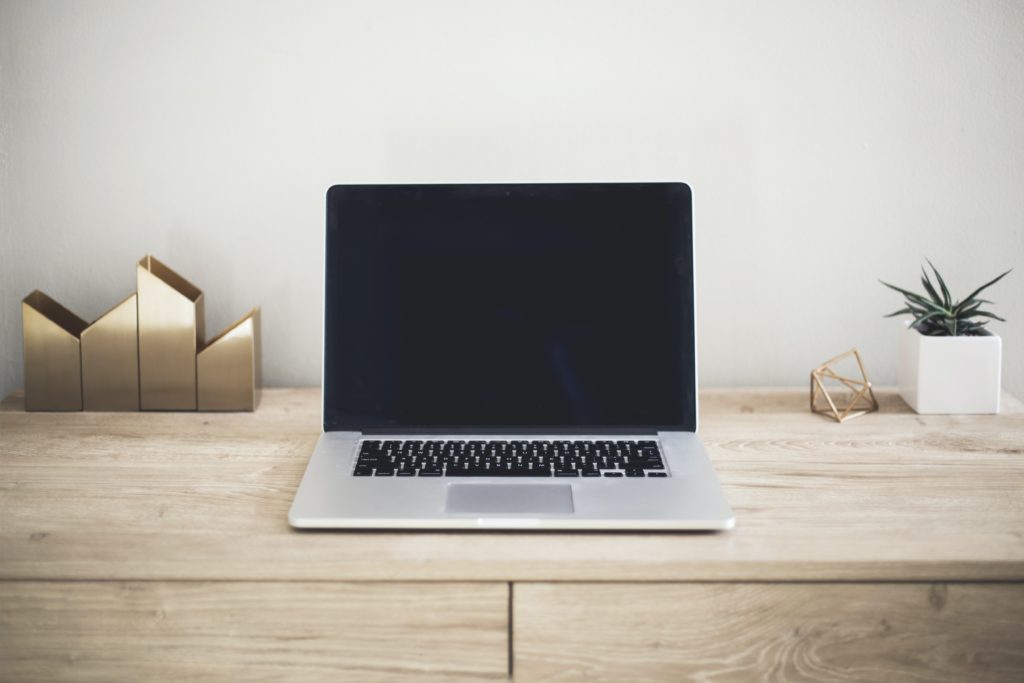
3. Setting Up the Workstation
Position Your Desk for Natural Light
Natural light not only improves the aesthetics of your space but also has numerous benefits for productivity and well-being. When setting up your workstation, try to position your desk near a window to maximize natural light exposure. Natural light has been shown to improve mood, boost energy levels, and enhance cognitive function. Just be mindful of glare on your computer screen and use blinds or curtains to minimize any potential distractions.
Arrange Equipment for Convenience
Efficiently arranging your equipment is essential for a smooth workflow. Make sure your computer monitor is positioned at eye level to prevent strain on your neck and eyes. Place frequently used items, such as your keyboard, mouse, and notepads, within easy reach to minimize unnecessary movements and increase productivity. Consider investing in a monitor stand or adjustable arm to achieve the optimal viewing angle and reduce neck and shoulder tension.
Manage Cables and Wires
One aspect often overlooked when setting up a home office is cable management. Messy cables can not only be visually distracting but also pose a trip hazard and make it difficult to access your equipment when needed. Take the time to organize and secure your cables and wires using cable clips, zip ties, or cable management sleeves. This will not only improve the safety of your workspace but also provide a clean and clutter-free environment that promotes concentration and productivity.
4. Creating a Distraction-free Environment
Minimize Noise Disturbances
Noise distractions can significantly impact your ability to concentrate and be productive. If you’re working in a noisy environment, consider using noise-canceling headphones or earplugs to block out unwanted sounds. Alternatively, you can play background music or ambient noise to help mask distractions. Experiment with different noise levels and types to find what works best for your concentration.
Use Dividers or Screens
Dividers or screens can be an effective way to create a visual barrier between your workspace and the rest of your home. This can help minimize distractions and create a sense of privacy, particularly if you’re working in an open-concept area. Portable room dividers or privacy screens can be easily adjusted and moved as needed, providing flexibility in creating a distraction-free environment.
Clear Clutter and Keep it Tidy
While it may be tempting to let papers and clutter accumulate on your desk, a cluttered workspace can impact your productivity and increase stress levels. Take a few minutes at the end of each workday to tidy up your desk, file away documents, and clear any unnecessary items. By starting each day with a clean and organized workspace, you’ll minimize distractions and set the stage for a productive workday.

5. Establishing Boundaries
Set Clear Working Hours
When working from home, it’s easy for work to bleed into your personal time, leading to burnout and a lack of work-life balance. To avoid this, set clear working hours and adhere to a schedule. Communicate your availability to your team or clients and establish boundaries with family or housemates during your designated working hours. This will help you maintain focus during work hours and ensure you have time for personal activities and relaxation.
Communicate with Family or Housemates
To create a productive home office environment, it’s important to communicate with your family or housemates about your work schedule and expectations. Let them know when you need uninterrupted time and discuss any noise or privacy requirements. By setting clear expectations and fostering open communication, you can minimize distractions and create a supportive environment that allows you to work productively.
Create Visual Cues
Visual cues can be an effective way to signal to yourself and others when you’re in work mode. For example, you can hang a “Do Not Disturb” sign on your door or use a specific desk lamp as a visual signal that you’re in the midst of focused work. These cues not only help remind others to respect your workspace but also serve as a reminder to yourself to stay on task and maintain productivity.
6. Optimizing Lighting
Maximize Natural Light
Natural light is not only beneficial for creating a pleasant and inviting workspace but also plays a vital role in your productivity and well-being. Whenever possible, position your desk near a window to allow as much natural light as possible. Natural light has been shown to boost mood, improve cognitive function, and enhance overall well-being. If your space lacks natural light, consider using artificial lighting options that mimic natural daylight, such as full-spectrum or LED lights.
Add Task Lighting
While natural light is ideal, it’s important to supplement it with task lighting for specific work tasks. Task lighting can reduce eye strain and improve visibility, particularly when working on detailed tasks or reading documents. Choose a desk lamp or adjustable light with the appropriate brightness and color temperature for your needs. A well-lit workspace can enhance focus, prevent eye fatigue, and promote productivity.
Adjust Lighting Temperature
The color temperature of lighting can have a significant impact on your mood and productivity. Cool lighting (higher color temperature) is known to be energizing and promotes alertness, making it suitable for tasks that require concentration. On the other hand, warm lighting (lower color temperature) creates a cozy and relaxing atmosphere, making it more suitable for winding down at the end of the day. Consider the type of work you’ll be doing and adjust the lighting temperature accordingly to optimize your productivity and well-being.
7. Choosing Colors and Decor
Pick Energizing Colors
Color psychology suggests that certain colors can impact mood, motivation, and productivity. When choosing colors for your home office, opt for energizing hues that promote focus and motivation. Colors like green, blue, and yellow are known to enhance productivity, while avoiding overly bright or distracting colors. Experiment with different color schemes and find a combination that works best for your work style and personal preferences.
Incorporate Personal Touches
While it’s important to create a professional workspace, don’t forget to incorporate personal touches that make the space feel comfortable and inspiring. Display meaningful artwork, photographs, or plants that bring you joy and reflect your personality. These personal touches can boost mood and create a sense of connection to your workspace, enhancing your overall productivity and well-being.
Avoid Overstimulating Decor
While personal touches are valuable, it’s crucial to strike a balance and avoid overstimulating decor that may distract or overwhelm you. Opt for a clean and uncluttered aesthetic that promotes focus and minimizes visual distractions. Consider the purpose of each item or decoration in your space and ensure it serves a functional or meaningful purpose.
8. Creating an Ergonomic Setup
Maintain Good Posture
Maintaining good posture is essential for preventing discomfort and injury during prolonged periods of sitting. Sit up straight with your feet flat on the floor and your back supported by your chair. Avoid hunching or slouching, and make a conscious effort to correct your posture throughout the day. Consider incorporating regular stretching or exercise breaks to promote blood circulation and reduce muscle fatigue.
Adjust Monitor and Keyboard Height
Proper positioning of your monitor and keyboard is crucial for maintaining a comfortable and ergonomic setup. Position your monitor at eye level to prevent straining your neck by using a monitor stand or adjustable arm. Ensure that your keyboard is at a height that allows your arms to rest comfortably and your wrists to remain straight. Consider using a keyboard tray or adjustable desk to achieve the optimal ergonomic positioning.
Keep Essential Items Close
To minimize unnecessary strain or movements, keep essential items within easy reach. This includes items such as your phone, mouse, and frequently used office supplies. Placing them within arm’s reach will reduce the need for excessive stretching or reaching, creating a more efficient and ergonomic workspace.
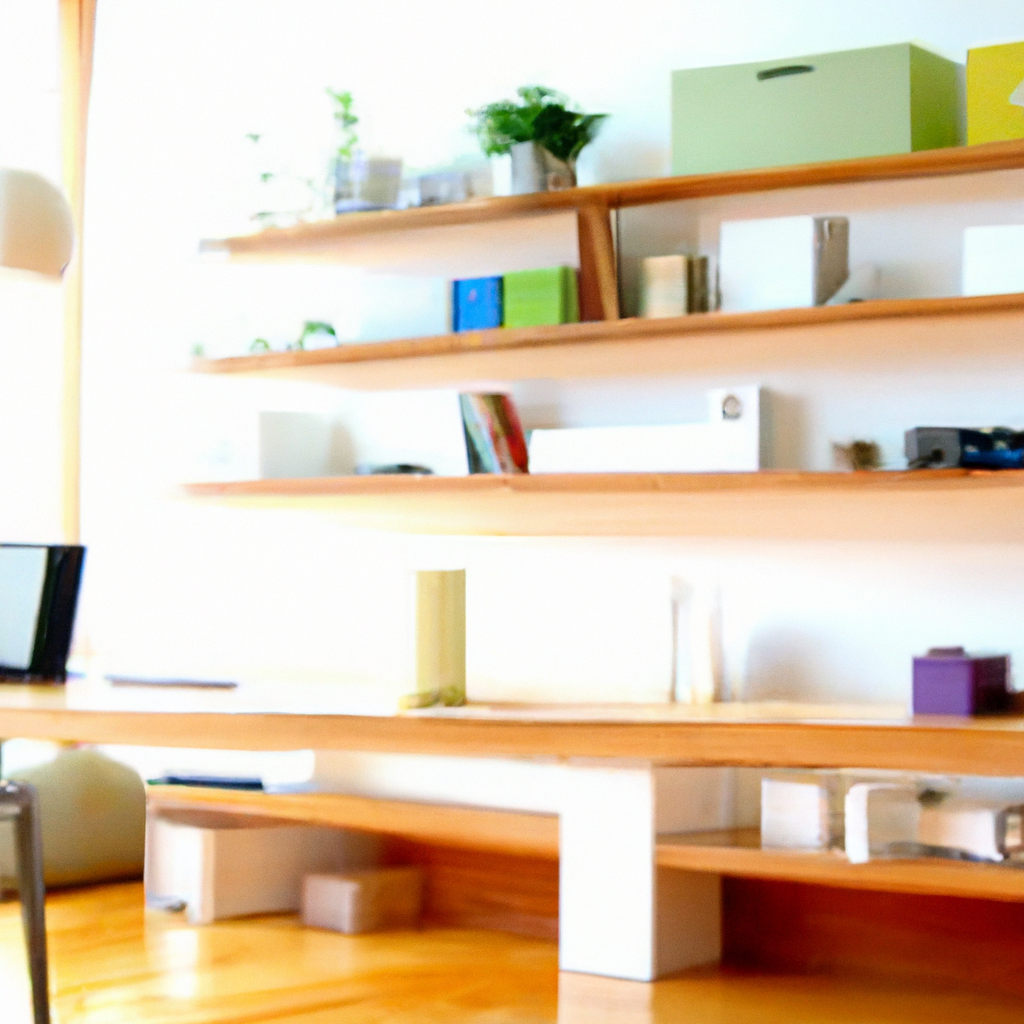
9. Organizing Digital Files
Utilize Cloud Storage
Digital clutter can be just as detrimental to your productivity as physical clutter. Take advantage of cloud storage solutions to keep your digital files organized and easily accessible. Cloud storage allows you to sync and access files from multiple devices, ensuring you have the information you need at your fingertips. Utilize cloud storage platforms such as Dropbox, Google Drive, or Microsoft OneDrive to store and categorize your files.
Create Folders and Categories
Organization is key when it comes to managing digital files. Create a clear system of folders and categories that make sense to you and your work style. Whether you organize your files by project, client, or topic, strive for consistency and ensure that each file has a designated place. Regularly revisit and declutter your digital files to maintain an organized and efficient digital workspace.
Regularly Backup Data
Data loss can be devastating, so it’s crucial to regularly back up your important files. This can be done by setting up automatic backups to an external hard drive or utilizing cloud backup services. By regularly backing up your data, you’ll have peace of mind knowing that your work is safe and easily recoverable in the event of a computer malfunction or accident.
10. Implementing Time Management Strategies
Use Productivity Tools
There are a plethora of productivity tools available that can help you manage your time and tasks effectively. Experiment with different tools such as task management apps, project management software, or time-tracking tools to find what works best for you. These tools can help you prioritize tasks, set deadlines, and stay organized, ultimately boosting your productivity and helping you achieve your goals.
Avoid Multitasking
While multitasking may seem like a superpower, it can actually hinder your productivity and result in lower-quality work. Instead of attempting to juggle multiple tasks simultaneously, focus on one task at a time. Prioritize your to-do list and allocate dedicated time slots for each task, allowing yourself to fully immerse and concentrate on one task before moving on to the next. By avoiding multitasking, you’ll be able to devote your full attention to each task, resulting in higher-quality output and improved productivity.
Schedule Distraction Time
While it’s important to minimize distractions, it’s equally important to allow yourself designated moments of downtime. Schedule short breaks throughout your workday to recharge and refresh your mind. During these breaks, engage in activities that help you relax and recharge, such as taking a walk, practicing mindfulness, or enjoying a cup of tea. By incorporating intentional moments of relaxation, you’ll prevent burnout and maintain a healthy work-life balance.
Creating a productive home office space requires careful consideration and planning. By choosing the right space, investing in comfortable furniture and equipment, setting up your workstation strategically, creating a distraction-free environment, establishing boundaries, optimizing lighting, choosing appropriate colors and decor, implementing an ergonomic setup, organizing digital files, and employing effective time management strategies, you can create a space that supports your productivity, well-being, and overall success. Experiment with these tips and tailor them to your unique needs to create a productive home office space that allows you to thrive in your work.
